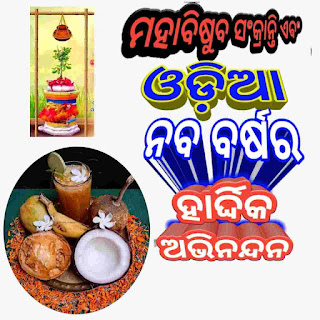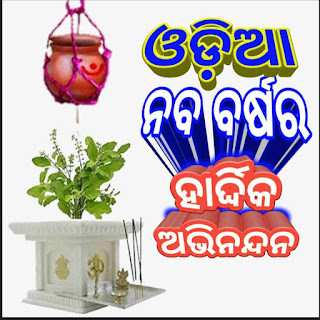Maha Bisuba Sankranti: Welcoming the New Year in Odisha with Festivity and Tradition
 |
| Odia New Year Wishes:Maha Bisuba Sankranti |
As the calendar turns to the day of Maha Bisuba Sankranti, the air in Odisha fills with the spirit of renewal and celebration. Known also as Pana Sankranti, this festive day marks a significant transition in the celestial calendar—the Sun's entry into Aries, signifying the end of spring and the commencement of summer.
Download Odia New Year(Pana Sankranti )Greetings
 |
| Odia New Year Wishes |
Pana Sankranti:Celebrating New Beginnings
Maha Bisuba Sankranti, or Mesha Sankranti, is celebrated with great enthusiasm across Odisha as it coincides with the traditional New Year. This festival is deeply rooted in the astronomy of the region, marking the day when the Sun crosses the celestial equator. Often referred to as Maha Visuba Sankranti, the name itself traces back to the Visuva Rekha or the Equator, highlighting the balance between day and night during this period.
Maha Bisuba Sankranti:Rituals of Devotion and Joy
One of the hallmark rituals of Pana Sankranti involves the preparation and distribution of 'Pana', a traditional sweet drink. This beverage, made from wood apple pulp, coconut gratings, cottage cheese, and other ingredients, is designed to offer relief from the scorching heat, signifying the importance of staying hydrated during the summer months. The drink is meticulously prepared and then poured into an earthen pot with a small hole at the bottom. This pot is typically hung over a Basil (Tulsi) plant, allowing the nourishing liquid to drip slowly onto the plant, symbolizing sustenance and life.
Special religious ceremonies are observed in prominent temples, including the revered Jagannath Temple in Puri. Here, priests read the newly prepared almanac before the deities, setting the divine tone for the year ahead. Devotees throng to these spiritual sanctuaries, offering prayers and seeking blessings for prosperity and health in the New Year.
Cultural Expressions thrtake Festive Practices
The festival also marks the conclusion of the Danda and Jhamu Yatra, a 13-day period of rigorous religious activities. Devotees partake in various forms of self-mortification, including fire walks and bodily piercings, to fulfill vows and show devotion to the deities. These practices are observed with intense fervor in different parts of the state, known regionally as Chadak Parva in the north and Danda Nata in the south.
The celebration of Maha Bisuba Sankranti is not confined to Odisha alone but resonates with similar New Year festivals across India, such as Baisakhi, Bihu, Vishu, and Puthandu. Each of these festivals, while unique in their customs, shares the common theme of celebrating the agricultural and astronomical transitions that define their respective cultural calendars.
A Unifying Festival of Joy and Renewal
Maha Bisuba Sankranti is a time for communal harmony, where people come together to share in the spirit of the season. It's a day filled with music, dance, and communal feasting, where the young and old participate in equal measure. The festival serves not only as a cultural anchor but also as a moment of unity among the diverse populations of the state, reinforcing bonds and fostering a sense of community.
In celebrating Maha Bisuba Sankranti, the people of Odisha embrace the timeless traditions handed down through generations. It is a festival that beautifully blends the ancient with the contemporary, inviting everyone to pause, reflect, and rejoice in the heritage and natural rhythms of life. As Odisha welcomes the New Year, Maha Bisuba Sankranti remains a vibrant testament to the state's rich cultural tapestry and its enduring spirit of festivity.




0 Comments